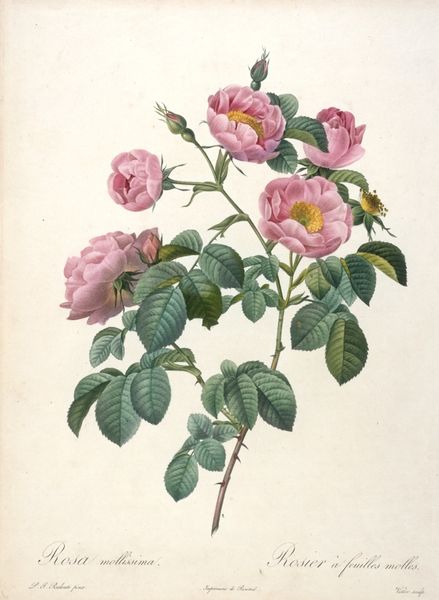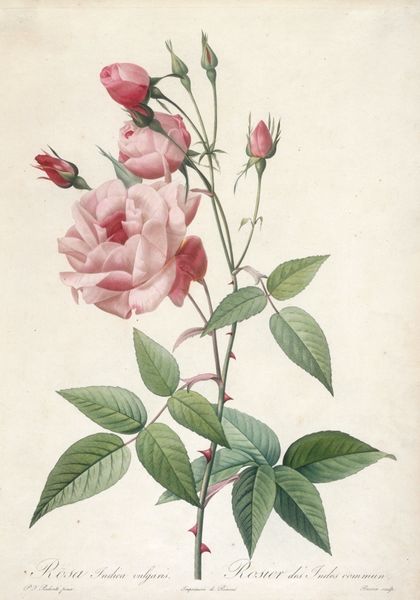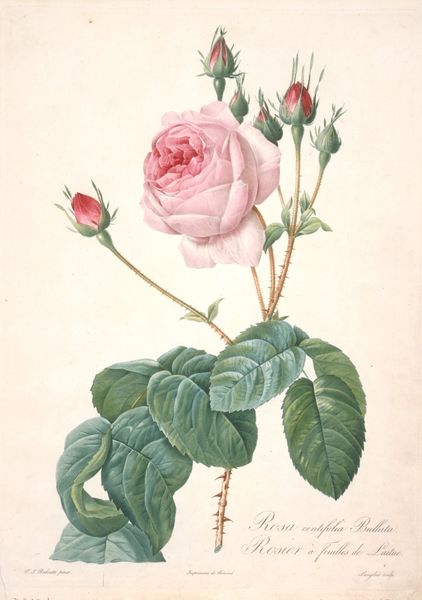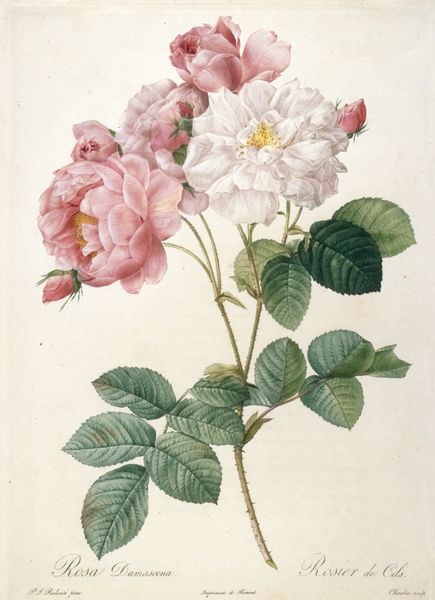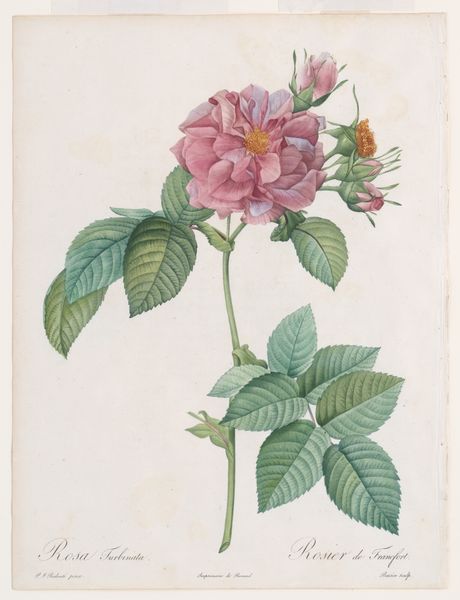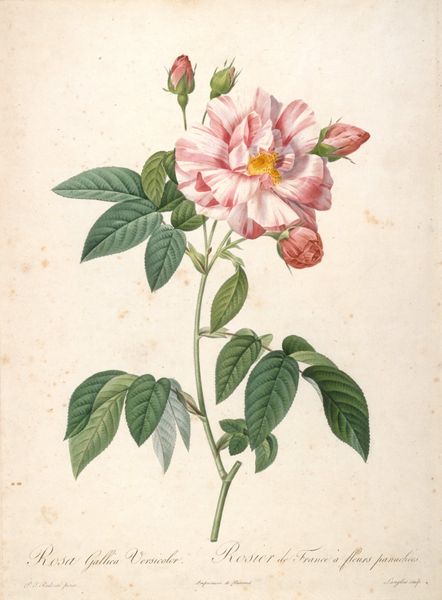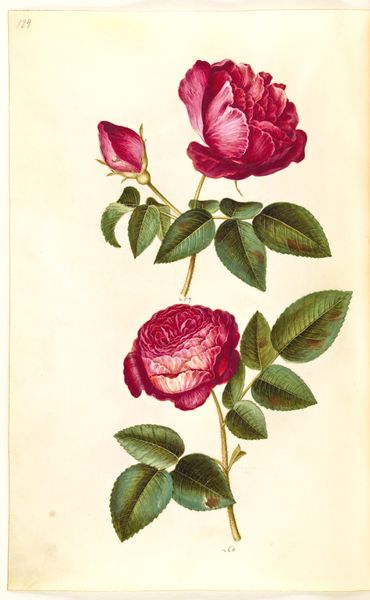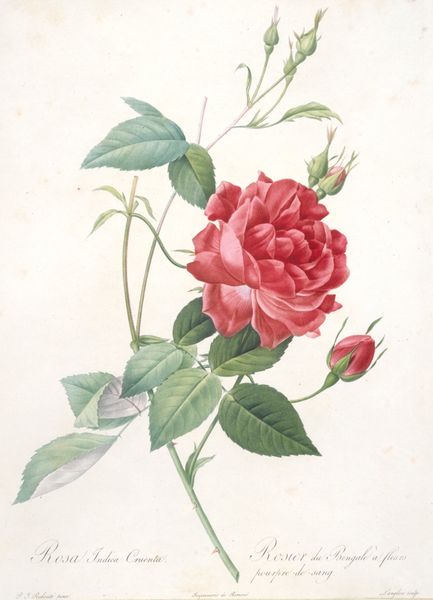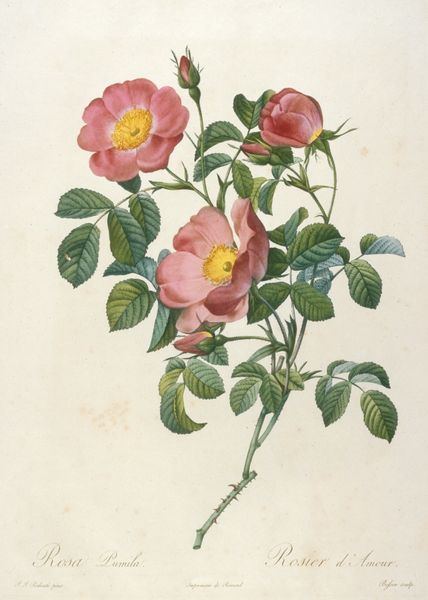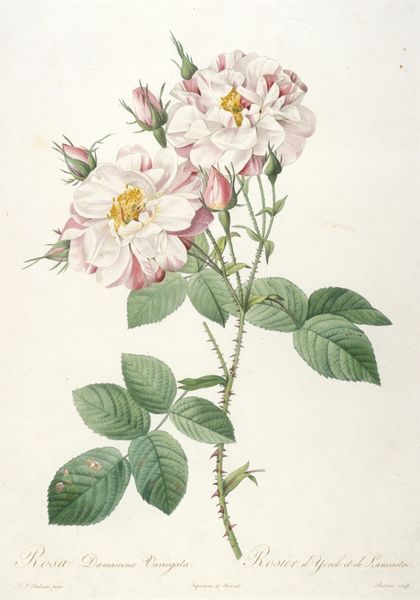
Rosa centifolia angelica rubra (Rosebush of Cumberland) 1817 - 1824
0:00
0:00
drawing, print, watercolor
#
drawing
# print
#
botanical illustration
#
watercolor
#
romanticism
#
botanical drawing
#
watercolour illustration
#
botanical art
#
watercolor
Dimensions: 14 x 10 1/2 in. (35.56 x 26.67 cm) (sheet, margins cut)
Copyright: Public Domain
Curator: Look at this botanical drawing. It's a watercolor and print titled "Rosa centifolia angelica rubra (Rosebush of Cumberland)," made between 1817 and 1824 by François Langlois, also known as Ciartres. It currently resides here at the Minneapolis Institute of Art. Editor: What immediately strikes me is its delicate beauty, the precision in rendering each petal and thorn. It's not just a rose; it’s an exercise in the tension between fragility and defense. Curator: Langlois created this in a historical moment rife with political turbulence, both in Europe and the Americas. Roses themselves often carried symbolic weight during periods of political unrest. It makes me think about the socio-political landscape in which these pieces were created. What did a symbol of such natural perfection mean in times of inequality? Editor: Roses throughout history are linked to ideas of love and beauty of course. Even political affiliation. But this isn’t merely a symbolic gesture, this rose feels meticulously observed. The tight buds clustered around the central bloom suggest a hopeful, if somewhat precarious, emergence. Curator: Consider also that during Langlois's time, scientific illustration was crucial for documenting and classifying the natural world, reflecting Enlightenment ideals of order and reason. It was not purely aesthetic, it played a role in shaping an emerging world. How does Langlois use this perceived neutrality of art to embed more subversive ideas? Editor: Well, I see something enduring in its design; despite being over two centuries old, the composition still captivates. The arrangement on the page isn't haphazard; there's a sophisticated understanding of line and space, and balance in tone. It creates a lasting emotional response. Curator: A poignant reminder, isn't it, that even something as seemingly simple as a botanical illustration can become a profound reflection of its historical moment and our understanding of how we interact with a complicated reality. Editor: Yes. The Rosebush of Cumberland makes you consider the timeless beauty and quiet resilience reflected in the symbols of life and art.
Comments
minneapolisinstituteofart almost 2 years ago
⋮
Botanical illustrators working in the fifteenth and sixteenth centuries devoted themselves to the medicinal qualities of plants and sought to render plant structure and function as precisely as they could. Later, European explorers brought specimens back from exotic locales, and artists carefully reproduced them for an audience fascinated by new discoveries. By the eighteenth and nineteenth centuries, artists had shifted their emphasis from scientific illustration to the innate beauty of the plant or flower. The Minneapolis Institute of Arts is fortunate to possess an impressive collection of more than 2,000 botanical prints and drawings.
Join the conversation
Join millions of artists and users on Artera today and experience the ultimate creative platform.
